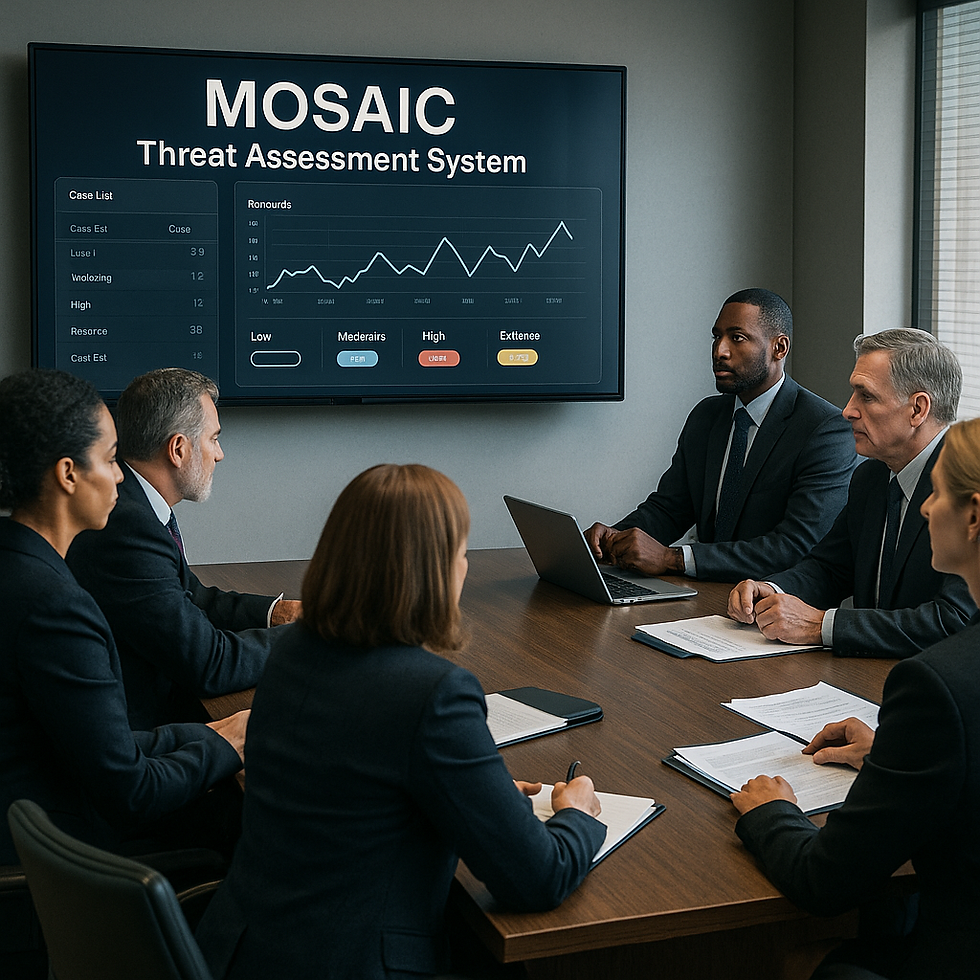The MOSAIC Threat Assessment System: Tools for Modern Leaders
- CrisisWire

- Sep 29
- 2 min read
When a student posts a violent threat, a fired employee stalks a workplace, or a public figure faces rising hostility, leaders often freeze. How do you know if a threat is real?
That’s exactly why the MOSAIC Threat Assessment System was developed. Used by universities, corporations, and federal agencies, it provides leaders with a structured, evidence-based way to evaluate threats before tragedy strikes.
The Problem: Why This Issue Exists
Too often, leaders rely on gut instinct or subjective judgment when facing a potential threat. That approach fails because:
Bias clouds judgment (overreacting to minor incidents, underreacting to major ones).
Leaders lack consistent criteria for evaluation.
Information is scattered across HR, IT, security, and staff reports.
Without a system, leaders risk either ignoring a real threat — or overreacting and damaging trust.
(Related read: Transient vs. Substantive Threats in Schools)
Case Studies / Real-World Evidence
The U.S. Marshals Service and universities have used MOSAIC to assess threats against judges, students, and public officials. (MOSAIC Overview – Wikipedia)
It has been applied to domestic violence, workplace violence, and public figure stalking cases.
Studies show structured threat assessments reduce both false alarms and missed warnings.
This mirrors broader federal guidance: both FBI and DHS emphasize structured behavioral threat assessments as the best prevention model.

Actionable Fixes (The Playbook)
How leaders can begin applying MOSAIC principles today:
Adopt a Structured Assessment Tool Whether it’s MOSAIC or a comparable framework, ensure your team is using checklist-driven evaluation rather than guesswork.
Cross-Disciplinary Review Teams MOSAIC works best when HR, security, mental health, and leadership all contribute input.
Continuous Training Update leaders and staff annually with refreshers on recognizing warning signs.
Document Every Case Like MOSAIC, keep records of why decisions were made — critical for liability and learning.
For a deeper framework of threat assessment checklists and leadership protocols, see The Threat Assessment Handbook.
Leadership Responsibility
Leaders can no longer rely on “gut feelings” when safety is at stake. Structured tools like MOSAIC help reduce liability, improve consistency, and protect communities.
As we emphasize in The Prepared Leader, prevention is only possible when leadership embraces responsibility and systematizes safety.
We share continuing insights into threat assessment practices on CrisisWire’s LinkedIn.
📧 Contact us at crisiswire@proton.me for tailored threat assessments, continuity planning, and site security solutions.
Follow CrisisWire:
👉 Explore more insights on the CrisisWire Blog.





Comments